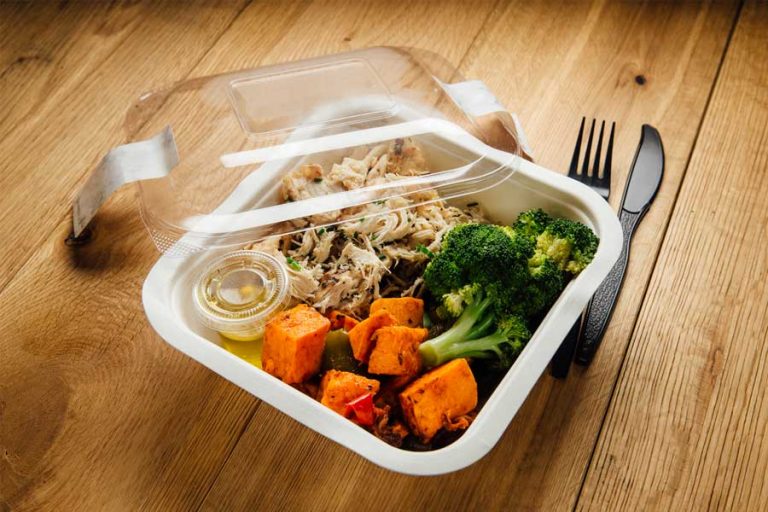|
Plastic and Food By Pierre Mouchette | Bits-n-Pieces Unfortunately, food is always touching plastic. Yes, plastics play a significant part in food production, preparation, and sometimes eating. To define this usage, think that food is processed on plastic equipment, packaged and shipped in plastic-lined boxes and cans, prepared with plastic utensils, cooked in plastic-coated pots and pans, microwaved in plastic containers, and even eaten with plastic utensils.
Because we are always looking for an easy way or are just lazy, plastics make obtaining, eating, and storing food more efficient. The question then becomes, ‘are they also making us sick?’ According to the media, recent discussions among health professionals have spawned many questions about the safety of using plastic items in the food industry. Plastic in Food, an Inevitable Transfer Any plastic container will leach trace amounts of the plastic into the food contained therein. Migration increases when plastic touches fatty, salty, or acidic foods. The heating of food in plastic is another whammy in the transfer amount. Suspects Two suspects under active investigation are bisphenol A (BPA) and a class of chemicals called phthalates. Phthalates These are ‘plasticizers,’ a chemical that increases their flexibility, transparency, durability, and longevity when added to plastics. Phthalates are thought to block the action of testosterone in the body, with significant effects on the male reproductive tract and other organs. Higher levels of phthalates in the body are linked to low sperm count and the quality of sperm in adult men. Plastics and the BPA Story Bisphenol A is a material used in rigid, lightweight plastics called polycarbonates. Some baby bottles and water bottles are made from BPA, with the primary exposure coming from the linings of canned foods. Monitoring by the CDC shows that more than 90% of us have detectable levels of BSA in our bloodstream. If you want to reduce your exposure to BPA, the following are some steps that you can take
Pots, Pans, and Plastic Teflon and related nonstick coatings on pots and pans can release toxic chemicals during manufacture and disposal and use at very high temperatures (over 500 degrees). Flame FAQs - it is important to note that if there is not enough oxygen, a gas flame appears blue because complete combustion creates enough energy to excite and ionize the gas molecules in the flame. With complete combustion
Note: the same chemical used in nonstick cookware is also used in the linings of nonstick packaging like that used for microwave popcorn and some fast-food containers. You can avoid any exposure to these chemicals by following these tips
0 Comments
Your comment will be posted after it is approved.
Leave a Reply. |
Archives
May 2024
|
